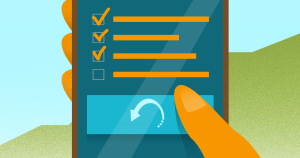The ERR_TOO_MANY_REDIRECTS message (also known as a redirect loop) can make the user feel confused, but it’s only a warning from the browser. It states that it’s not possible to reach the requested page.
If you find that message while trying to load your site, it means that the entire page or the entire content is unavailable for you and your users.
This might happen due to a recent change on your WordPress site, a wrong configuration of redirects, or some issue with third-party services.
Although it seems pretty serious, it’s not the end of the world: this error is easy to fix.
But you need to solve it as soon as possible to avoid a bad experience for visitors. After all, if they see that message on the screen, they might give up on you before even knowing what you’re offering, because your website doesn’t seem secure.
In this post, we’re going to describe the reasons for the error of too many redirects on WordPress sites. Also, we’re going to address the many steps required to fix it.
Here’s what you’re going to see:
- What does the ERR_TOO_MANY_REDIRECTS mean?
- Why does the ERR_TOO_MANY_REDIRECTS error occur?
- How to solve the ERR_TOO_MANY_REDIRECTS problem?
- Wrap Up!
Download this post by entering your email below
What does the ERR_TOO_MANY_REDIRECTS mean?
The error of too many redirects are shown when the browser can’t establish a connection between the initial page and the destination page in a redirect.
If you use Google Chrome, the warning looks like this: “This page isn’t working. www.example.com redirected you too many times. Try clearing your cookies. ERR_TOO_MANY_REDIRECTS” or “This webpage has a redirect loop ERR_TOO_MANY_REDIRECTS.”
On Mozilla Firefox, you will get:
“The page isn’t redirecting properly. Firefox has detected that the web server is redirecting the request for this address in a way that will never be complete.
This problem can sometimes be caused by disabling or refusing to accept cookies ERR_TOO_MANY_REDIRECTS.”
On both of them, the message is crystal clear: the page doesn’t load because it has been redirected to a loop, or there have been too many redirect requests.
Why does the ERR_TOO_MANY_REDIRECTS error occur?
Redirects are either an efficient SEO strategy or a tool to allow users to access pages with a different URL.
Let’s assume that you have a big, relevant website, but, for some reason, instead of refreshing the content, you’d rather send your user to a new page, one that’s more consistent or has more functions.
It would be an inconvenience to ask the visitor to click again or type a different URL in the address bar.
When you use redirects, people can automatically access the new page while trying to reach the old one. Even after having typed the wrong address, they get to the right page. That means a significant improvement in user experience.
However, when there’s a misconfiguration, the browser can get confused and redirect the visitor to other URLs or an unknown destination.
When the browser doesn’t understand or know which URL to use, it gives up searching for the right URL to avoid overload. That’s when the user gets the error message on the screen.
In some specific cases, the browser even goes into an infinite redirection loop. That’s how it works: the old URL redirects to the new one, but due to the misconfiguration, the new URL redirects back to the old one.
Finally, the system gives up on trying all this and displays the message: “ERR_TOO_MANY_REDIRECTS”.
Maximize your technical SEO efforts by utilizing the expertise of our freelance SEO specialists. Join the free trial at WriterAccess and promptly enlist the assistance of a skilled professional to enhance your SEO insights.

How to solve the ERR_TOO_MANY_REDIRECTS problem?
If you are not the site admin, you only need to clear the browser cache/cookies and refresh the page. If that doesn’t work, you will have to contact the manager and wait until he fixes it.
However, if you are the manager, you will have to try a few things. The error is usually a result of WordPress’s misconfiguration, as we previously mentioned. Sometimes, it can be solved by something as easy as clearing cookies or cache.
That’s why we’re going to present to you some strategies so you can get rid of that message. This way, you won’t let your visitors down.
Clear the cookies and the cache
When that message pops out, some browsers suggest that the problem might be the cookies.
That’s why we also recommend trying that even if you’re the site owner.
But how exactly do you clear cache and cookies? It’s simple. It only takes a few minutes, although it differs depending on the browser you’re using. Here are some specific instructions:
Google Chrome
- At the top-right, you will see three small dots. Click on it. Then, select settings.
- Scroll down and click on “Advanced”.
- Then you have to click on “Clear browsing history”.
- Next, select “cache and cookies”.
- Select the time range, which is how many cookies you want to delete based on the period (last 24 hours, seven days, four weeks).
- Then, click on “Clear data”.
Mozilla Firefox
- Click on the three small dots at the right top.
- Next, click “Clear data”.
- Select the option “Cookies and Cache”, and click “Clear”.
Try refreshing your site one more time. If that strategy doesn’t work, you will have to follow the next steps.
Clear the WordPress cache
If you use a caching plugin (Super cache WP or other), the next attempt should be clearing the WP cache.
As each plugin works differently, it’s necessary to check the specs of the one you have installed on your blog.
You can Google the name of the plugin for some info or ask support for help. Then, you will receive instructions on how to clear the cache in your plugin settings specifically inside your WordPress admin dashboard.
Then, again, you need to refresh the website to see if everything’s OK. In case there’s still an error, you’re not there yet. Keep reading.

Check the URL settings
It’s essential to check the URL settings because a misconfiguration can cause redirect loops. Click on the “General” tab within “Settings”.
There are two main fields:
- WordPress URL (which specifies where all WP files are).
- Site’s URL (the home page address that’s available for users).
In most cases, those two addresses should match. Check it carefully, so the differences don’t cause further problems.
None of them must contain:
- Whitespaces at the end.
- www at the beginning (as in https://www.example.com). Instead, it should be https://example.com.
If one URL contains “www” and the other doesn’t change them so they can be the same: either both contain it or none of them does. You can also try to insert PHP before HTML.
In case you can’t access the control panel to alter the URL, it’s still possible to do it by editing the wp-config file:
- Go to the file manager (FTP client).
- Open the folder with your WordPress files.
- Find the wp-config.php.
- Right-click on “Edit URL”.
- Add those lines to the code (don’t forget to change the URL).
- Redefine the address and remember that both should match, home and WordPress (‘WP_HOME’ and ‘WP_SITEURL’).
- Save the file.
- Click on “Yes” on the command prompt to upload the modified file.
- Refresh the site and check if the problem has been solved.
If you will, you can also change the address via the database. All it takes is a login onto the web server through MySQL. The phpMyAdmin is part of many hosting services panels and can be used for that.
- Find the wp_options table (or the other prefix defined during installation).
- Double-click the fields you need to edit.
- Modify the address in option_value (in the two first lines: home page address and WordPress address, the same thing we mentioned before).
Change the security protocol
If you use a security protocol (SSL certificate), switch it to a default protocol. Refresh the page and check if the redirect loop is gone.
If the message is still there, it means that your SSL certificate needs to be set up properly before you use it again (the address stays as HTTPS).
Don’t forget to consult expert support to return to a setting that guarantees access security for users. That is also essential to ensure higher reliability on your site.
Redefine the .htaccess
It’s important to verify the .htaccess file every time there’s an error on WordPress. The file is part of the Apache server settings and is used to control page redirects. Therefore, any problem in the file can cause issues in the redirect routine.
To check if that’s the case, you will need to redefine the .htaccess file:
- Locate the site files using the FTP client.
- Find the folder with the WP files.
- Locate the .htaccess.
- Download it as a backup.
- Right-click on it and open the file for editing (never change the backup, only the original version).
- Clear the content of the .htaccess and reset settings to default (you can easily find the default setting on the internet).
- Save and upload the default file to the web server.
- After you’ve done that, refresh the site.
If your site is OK after that, you will have to reconsider the .htaccess file; if not, you will have to restore the backup, because that file is not the source of the problem. Then, it’s necessary to keep digging.
Check the plugins
WordPress plugins can always be the root of any problem. If you have any redirect plugins installed, start by disabling them.
If that solves the issue, you’re good. If it doesn’t, you need to disable them one by one to check which of those plugins caused the loop.
That may take a long time, but don’t panic! There’s a quick and convenient way to do it automatically: first, disable all plugins once, before refreshing the page (don’t forget to backup the original .htaccess file as we’ve previously discussed).
If the loop is still there, enable all plugins again and continue to the next step. After having refreshed the site, if you see the error is gone, you will have no choice but to test individually.
If ERR_TOO_MANY_REDIRECTS keeps you from accessing the control panel, disabling all plugins manually may be necessary. You can do that in the FTP client or the file manager.
- Find the plugins folder, which is usually within the wp-content folder.
- Rename all folders.
- Or remove them all at once (never forget the backup).
ERR_TOO_MANY_REDIRECTS is an easy issue to solve, so you only have to ask for help if none of those steps work. If so, you can enable PHP error_reporting to go even further on the problem analysis.
Check the third-party services
You should review third-party services if you still see ERR_TOO_MANY_REDIRECTS after clearing cookies and the cache. Check external services with a proxy server, which is an intermediary server directing requests from multiple users to various servers.
Proxy servers and Flexible SSL options with HTTPS and HTTP requests may be responsible for redirect errors. For example, if a third-party service uses Flexible SSL, but you have an existing SSL certificate on your server, it will redirect requests to HTTPS, likely generating the redirect error. In this case, try switching to full encryption mode.
Third-party plugins on WordPress can also lead to excessive redirects. There are redirect plugins for setting up redirects when post or page permalinks are changed, but sometimes these edits may generate the “too many redirects” error message.
To check if this is your site’s issue, disable plugins by deactivating them all in bulk. Reactivate plugins one by one to find which one is faulty. You may want to find an alternative plugin or reach out to the developer for a solution.
Check redirects on your server
In addition to checking HTTP to HTTPS redirects, you should also take a look at any other redirects that may have been set up incorrectly on the server’s config files. An incorrect 301 redirect could mess up your whole site.
Another common culprit is the Apache .htaccess file found on WordPress hosts with Apache. If you see the ERR_TOO_MANY_REDIRECTS message and you have WordPress and Apache, follow these steps to fix an incorrect rule in the .htaccess file.
- Log into the site using SSH or FTP.
- Rename the .htaccess file to .htaccess_old to create a backup.
- Create a new .htaccess file with default settings and upload it to your server.
Misconfigured Nginx and reverse proxies could also cause trouble with redirects, so make sure to check these server files using a redirect tool.
Check the nature of redirect loop
If clearing the cache and cookies doesn’t work, another option is to check the nature of the redirect loop. You can do this via cURL or online redirect checkers.
These tools should bring up a list of problems found on your site’s servers, with suggestions for fixing the ERR_TOO_MANY_REDIRECTS message.
Many sites come up with 301 redirect loops, causing a chain of redirects that loop back to themselves. A faulty HTTP to HTTPS loop may also cause this error, which can be fixed by cutting down the number of redirects in a chain.
If you use Google Chrome, try the Redirect Path extension to get more insights on redirects for a specific page or URL. Once you know the nature of the redirect loop, you can identify errors and figure out the best resolution to avoid ERR_TOO_MANY_REDIRECTS in the future.
Wrap Up!
We hope that this guide helps lead you to a quick solution. However, if those steps are not enough to fix the issue, contact your host manager.
People who work there will know how to solve the redirect error. They might even be the ones who caused it in the first place.
As you concentrate on improving your website and fixing errors like ERR_TOO_MANY_REDIRECTS, it’s worth taking a moment to assess the quality of your content as well.
Not sure where to start? No problem! WriterAccess is the perfect platform to help you streamline your content production, combining the efficiency of AI-powered tools with the creativity of human writers.
Sign up now and get 14 days of free access to our network of expert writers. By monitoring your website, resolving any issues, and investing in high-quality content, you’ll undoubtedly propel your business to new heights!








